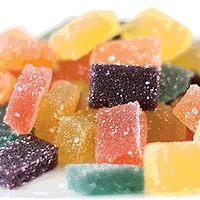Food Defense in the Global Environment: The Role of Quality Standards

More than almost anything else, food safety is an issue that touches everyone. Besides being consumers of food, readers of this publication also are involved professionally in the food industry in some capacity—and are thus further vested in a secure food supply. How to ensure food safety is a contentious issue, and, as we are all acutely aware, the solution is not simple.
The reasons are numerous: 1) the reality of the complex, global supply chains in which food is now produced; 2) a disjointed regulatory structure in which multiple agencies govern different areas of food (both in the U.S. and in many other countries); 3) a lack of resources to inspect food imports and overseas manufacturing plants (and even domestic plants); and 4) an absence of widespread adherence to independent quality standards across the food industry.
We’ve seen some of these deficiencies on full display in recent years in the United States, largely through episodes of microbial contamination, with large-scale recalls of spinach, jalapeño peppers, and peanut butter—to name just a few. We’ve also seen global episodes, including that of baby formula and other milk products manufactured in China that were tainted with the industrial chemical melamine. This was a highly disturbing situation, given that it was an intentional act driven by a desire for monetary gain. Such events can cause and have caused harm on a number of levels—most seriously by leading to illness and death. Sadly, those afflicted are often the most vulnerable in the population, such as infants, the elderly and those with compromised immune systems. These incidents also lead to consumer distrust in the food supply. From an industry perspective, they can result in the loss of millions of dollars—both from the cost associated with a recall to the drop in sales reflecting falling consumer confidence in the product. Obviously, these are all undesirable scenarios at best and catastrophic ones at worst. With increased globalization, it is safe to say that this situation will only become more complicated in the coming years.
Just as the challenges are multifold, so are the possible solutions. In this article, we focus on one in particular: the role of quality standards for food ingredients. However, as noted, there are many other pieces of the puzzle, including third-party certification programs and overhaul of regulatory approaches. In the area of third-party certifications, one significant example is the adoption of Global Food Safety Initiative (GFSI) standards by many food retailers for their private-label products—operated in the U.S. under the American National Standards Institute’s/Food Marketing Institute’s Safe Quality Food Program. On the regulatory front, President Obama formed a Food Safety Working Group (FSWG) in March 2009 in response to growing concerns about the food supply; the group published a set of key findings last summer that are publicly available. One telling piece of information from this report: at least a dozen federal agencies, implementing at least 30 different laws, have roles in overseeing the safety of the nation’s food supply. In the legislative arena, a food safety bill is working its way through Congress. This legislation includes a number of directives designed to address some of the problems we’ve laid out, including a requirement that importers prove the safety of their imports, wider use of third-party certification programs for imports, increased inspections at the border and more FDA inspections at overseas facilities.
Quality of Food Ingredients
Many of the activities of the FSWG and others focus on microbial contamination. However, the issue of food ingredients and their quality is an often overlooked yet critical component of food safety. The American diet is increasingly composed of processed foods. The typical dinner plate consists not only of meat and vegetables but a host of other products, such as colorings, flavorings, preservatives, emulsifiers, thickeners—and the list goes on. Food ingredients are just as much a part of the modern diet as fresh foods, and securing their quality (which in turn impacts safety) is equally important. Compounding the increased consumption of these ingredients is a growing pressure to keep the prices of food products low. This pressure comes from food retailers, responding to pressure from consumers. Food is always a competitive business, but the current economic climate makes it even more acute—creating ideal conditions for economically motivated adulteration of ingredients.
As manufacturers source raw materials from around the globe to find the lowest prices, less expensive items that claim the same quality and functionality as a higher-priced one are logically the most attractive to finished food manufacturers. The challenge, then, becomes how to determine that what is delivered to the loading dock is what it is supposed to be. In this environment, criteria to establish the identity, quality and purity of finished foods and ingredients become necessary to help ensure that the purchaser is acquiring the expected product and avoid economically motivated adulteration. Such adulteration includes dilution of products with increased quantities of an already present substance (e.g., watering down of juice), as well as the addition or substitution of substances to mask dilution and the substitution or addition of counterfeit material to genuine material without the knowledge of the purchaser.
To set the minimum criteria for the identity, quality and purity for food ingredients, standards are developed by different governmental and non-governmental organizations. These standards, which may be voluntary or mandatory, allow all parties to assess the food ingredient. Ingredient suppliers can use them as a means to demonstrate the quality of their materials, purchasers can use them to assure that the materials conform to the standard most suitable to their needs and independent third parties can use them to verify any claims made by other parties in the supply chain.
The Food Chemicals Codex (FCC) is a compendium that includes all food ingredients that can legally be added to food anywhere in the world. The FCC offers not only quality standards, developed through a scientific process that is open to the public, but also corresponding analytical reference materials to ensure compliance with the written standard. The unique combination of quality criteria, suitable analytical methods (included in the FCC standards) and reference materials offers all parties an independent means to agree on an ingredient’s science-based identity, quality and purity criteria, allowing both sellers and purchasers to improve the safety of their food by verifying the ingredient’s authenticity.
Case Study in Brief: Melamine
By now, most of us have heard of the infant formula tragedy in which six Chinese infants were killed and an estimated 1,200 were sickened after baby formula was tainted with melamine. The chemical was added to trick food quality tests into showing higher protein levels than actually existed. Even more disturbing, the melamine used in this episode was scrap melamine—not good enough for use in plastics or dishes, but apparently good enough to feed to babies. Of course, not all episodes of economic adulteration receive such widespread attention, and the level of harm that results can vary widely. In the example given earlier, the watering down of a juice, significant harm or death is not going to occur unless the water used to adulterate it is contaminated. However, what is important to remember is that any adulteration can easily result in a health hazard.
Whether an adulterated food ingredient is still safe for consumption depends exclusively on the adulterer’s actions. The substitution of an ingredient with any other material, performed without the knowledge of the purchaser, poses a multitude of unknown risks, including potential allergic reactions from undeclared ingredients or addition of toxic substances to an otherwise safe ingredient. In essence, this puts the safety of the food supply in the hands of the least ethical players. In the melamine scandal, the adulterers’ limited knowledge is what caused them to be caught eventually; melamine by itself is relatively non-toxic, but when melamine and cyanuric acid are combined, the results can be dire. The two compounds form a stable and insoluble complex crystal that can block the renal tube in kidneys. If the guilty parties in China hadn’t chosen those toxic compounds but rather pure melamine, the adulteration may have gone unnoticed.
With this episode as its backdrop, the United States Pharmacopeia (USP) held a workshop on food protein analysis and adulteration in the summer of 2009. The goal was to engage experts in academia, government and industry in a conversation about how to improve the analytical detection procedures for food protein in general and help prevent the adulteration of protein-based ingredients by other compounds such as melamine. Current tests have significant shortcomings, and no all-encompassing analytical approach that is suitable for the analysis of all food matrices currently exists. Methods that rely on the analysis of organically bound nitrogen, such as the Kjeldahl procedure, have the intrinsic flaw that the global conversion factor from nitrogen to total protein is only an approximation for most substances. The lack of specificity for substances other than organically bound nitrogen is a vulnerability that was exploited in the Chinese scandal. Experts in attendance supported USP’s proposal to develop a toolbox for food protein analysis, answering the analytical needs of various food ingredients in a more tailored way. USP’s staff and its Food Ingredients Expert Committee will explore updating current FCC standards for protein-based ingredients. For infant formula, meeting the appropriate level of quality is especially crucial. This is a key example of why up-to-date, independently developed and scientifically sound standards are so critical.
Case Study in Brief: Rebaudioside A
The past year saw the much anticipated arrival of stevia on the U.S. market. Used around the world for years, the product had been in a state of limbo, sold as a dietary supplement but not as a food ingredient until December 2008 when the FDA issued two letters of no objection for Rebaudioside A (Reb A), one of the chemicals that gives the stevia plant’s leaves their sweet taste. Consumer demand for a non-caloric, “natural” sweetener boded well for its introduction to the market, and most in the industry see a bright future for it.
As laid out above, the authenticated quality and purity of the Reb A used in foods and beverages is key. This is particularly true for such a high-profile ingredient, which offers a good deal of economic incentive for adulteration. Already there have been some reports of Reb A being replaced with other, less costly sweeteners; this has significant potential to damage both the ingredient’s and a company’s reputation and may put consumer safety at risk.
In August 2009, USP finalized a quality standard for Reb A. The written FCC standard contains specifications related to Reb A’s identity, purity and potential impurities, and to the use of USP-reference materials.
FCC 7 and Industry Partner for a Better Food Supply
Melamine and Reb A are just two examples of why standards for food ingredients are essential in the global manufacturing environment. There are a large number of food ingredients in use today, offering a lot of opportunity for tampering with products we consume daily. New threats continue to emerge, making a comprehensive collection of standards—updated on a regular basis to keep pace with new ingredients and threats alike—a key part of the safety net for food. This, of course, must be coupled with safeguards against microbial contamination that is not intentional but nevertheless potentially harmful. The latest edition of the food compendium, FCC 7, was published in February 2009 and is a resource that aids in making the food supply chain safer by helping manufacturers and users to distinguish genuine products from inferior and/or adulterated ones. It serves as a valuable resource in the ongoing challenge of safeguarding our food supply.
Markus Lipp, Ph.D., is director of food standards for USP, and has 20 years of experience in food and food ingredient issues, bottled water quality standards and genetically modified agricultural products.
James C. Griffiths, Ph.D., DABT, is vice president of food, dietary supplement and excipient standards at USP and a member of the Society of Toxicology, the Institute of Food Technologists, the Society of Biology, and several other international organizations. He has more than 25 years of experience in regulatory and safety issues related to food.
Looking for quick answers on food safety topics?
Try Ask FSM, our new smart AI search tool.
Ask FSM →








